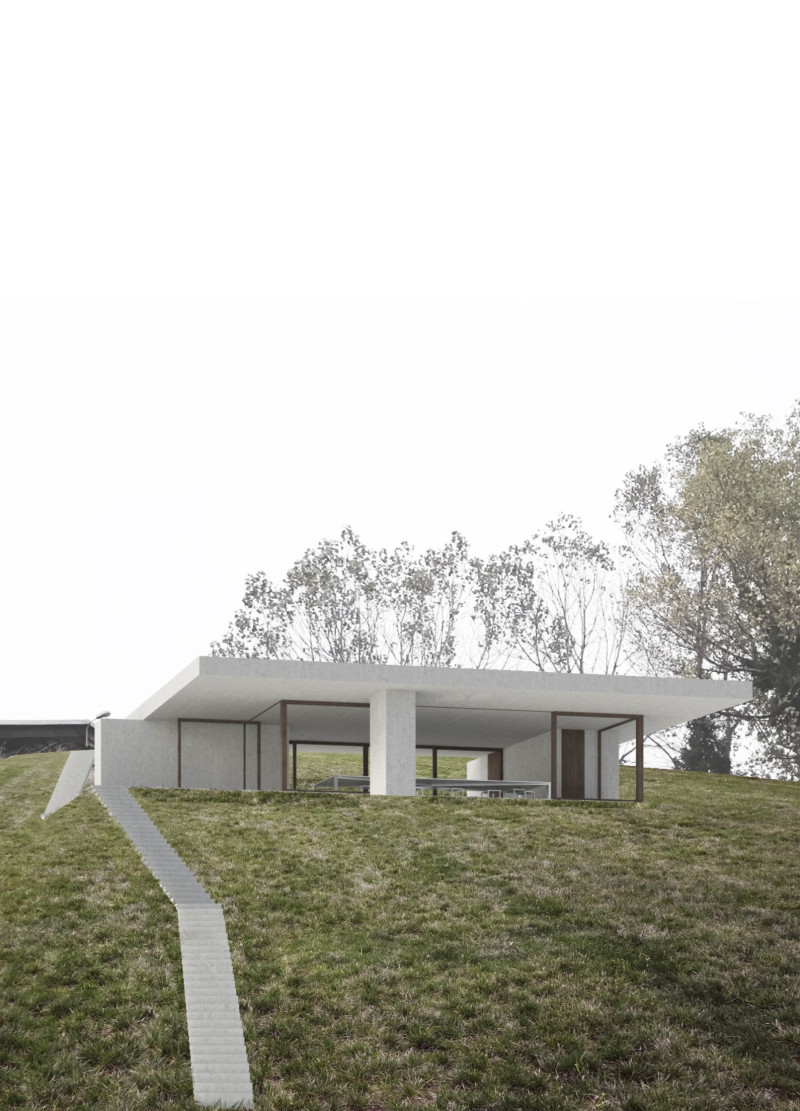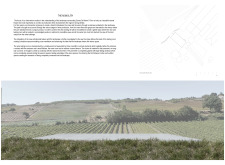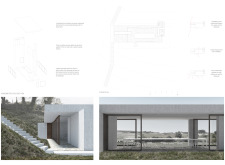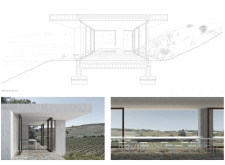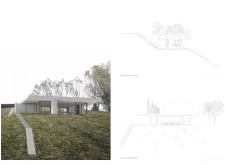5 key facts about this project
The primary function of The Monolith is to facilitate wine tasting and tours, providing a space for visitors to engage with the winemaking process. The design includes a pathway that connects the vineyards with the production area, allowing for an experiential journey into the world of wine. This pathway serves both practical and symbolic purposes, representing the movement from nature to production, thereby emphasizing the vineyard’s agricultural heritage.
Integration with Landscape and Sustainable Design
One of the unique aspects of The Monolith is its strong integration with the landscape. The structure is positioned to optimize views of the vineyard, allowing visitors to appreciate the scenery while engaging with the architectural elements. The extensive glazing used in the design creates large openings that minimize barriers between indoors and outdoors, reinforcing a sense of transparency and fluidity between the spaces. The architecture also incorporates sustainable design principles, utilizing strategies such as cross-ventilation and natural lighting to enhance energy efficiency and overall climate control within the building.
Material Selection and Aesthetic Cohesion
The choice of materials in The Monolith significantly contributes to its identity. Monolithic concrete is employed for structural elements, providing durability and a minimalist aesthetic that contrasts with the rustic nature of the vineyard. Glazed panels allow for natural light to penetrate the interior, while natural stone flooring connects the building’s interior with the outdoor spaces, facilitating a seamless transition. Wood is utilized in the design of sliding doors, lending warmth and texture to the concrete finishes. This careful selection of materials not only reflects the local context but also supports the thematic resonance of the project.
Exploring the architectural plans, sections, and design elements reveals how The Monolith strategically addresses both functionality and the user experience. The thoughtful arrangement of spaces within the structure promotes social interaction and encourages a deeper relationship with the landscape. Review the architectural designs to gain an understanding of how these elements converge to create a cohesive and immersive environment within the vineyard context.


